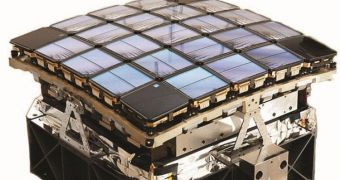Officials in charge of compiling the Senior Review guiding NASA's decision on which astrophysics missions to continue funding, and which to discontinue, say that all nine spacecraft that were brought to their attention should continue collecting data until at least 2014.
The review was requested on account of the low budget NASA got for fiscal year (FY) 2013. Officials at the agency were trying to decide which of their current missions to keep on track and which to cancel. The Kepler Telescope was one of the most “fortunate” spacecraft the review covered.
All of those involved in the project were very hopeful that the efficient planet hunter would get a mission extension. Thus far, the instrument was able to identify more than 2,300 exoplanetary candidates, of which experts expect to confirm around 80 percent.
The team that conducted the SR knew very well that the telescope needs to observe the same portion of the sky for years, so that it can confirm alien worlds. In order for an exoplanet to be confirmed, it needs to be observed passing in front of its parent star at least three times.
If the planet were located on a distant orbit, such as Neptune's or Pluto's around the Sun, then not even a decade of continuous observations would reveal it for a second time. However, Kepler's main purpose is to find a second Earth, which needs to lie in its star's habitable zone.
With this in mind, the SR panel decided to recommend funding the mission until at least FY 2016. All decisions made this year will be reviewed again during the next SR analysis, to be conducted in 2014.
NASA officials were surprised that the panel proposed that the highly-successful Spitzer Space Telescope, which surveys the sky in infrared wavelengths, be retired from active service by 2015. The recommendation was to continue mission funding at current levels only until 2014.
On the other hand, other important NASA missions, including the Hubble Space Telescope, the Fermi Gamma-ray Telescope and the Swift observatory, were supported by the new review.
“These nine missions comprise an extremely strong ensemble to enter the Senior Review process and we find that all are making very significant scientific contributions,” the Review committee said.
The US will also continue to support a number of joint missions it has with the European Space Agency, including the Planck Observatory and the XMM-Newton telescope, Universe Today reports.

 14 DAY TRIAL //
14 DAY TRIAL //